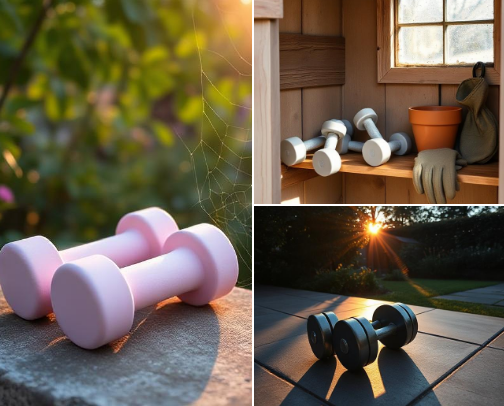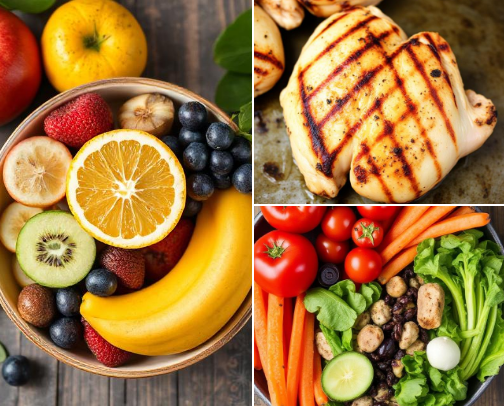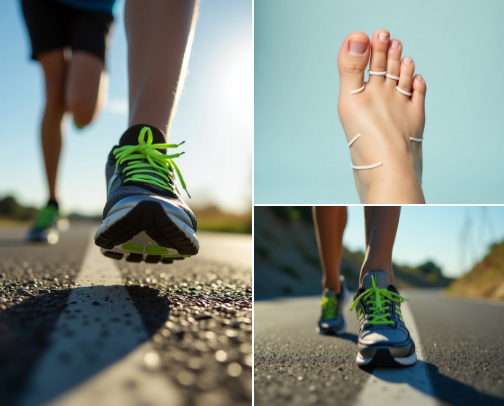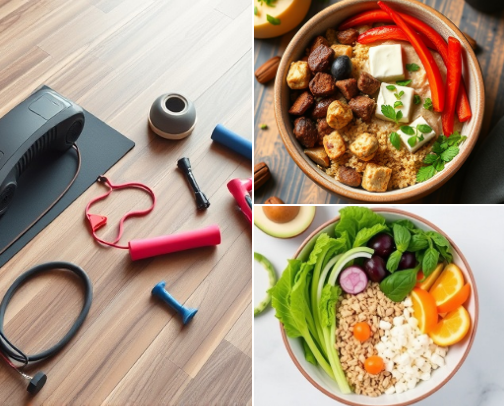10 Power-Packed Exercises for Maximum Results
In the vast and often confusing world of fitness, it's easy to get lost in a sea of complex machines, trendy workouts, and fleeting fads. Yet, the foundation of any truly effective strength and conditioning program, whether for a seasoned athlete or a complete beginner, is built not on novelty, but on timeless, fundamental movements. These are the power-packed exercises that engage multiple muscle groups simultaneously, turbocharge your metabolism, build functional strength that translates to real life, and deliver maximum results in minimal time. This comprehensive guide cuts through the noise to bring you the 10 most potent exercises you can incorporate into your routine. By mastering these movements, you will build a powerful physique, enhance your athletic performance, and forge a resilience that goes far beyond the gym walls. 1. Squats: The King of All Exercises Often crowned the undisputed king of lower body exercises, the squat is a compound, functional movement that should be a cornerstone of your regimen. It primarily targets the quadriceps, glutes, and hamstrings, but also seriously engages your core, back, and calves. How to Perform a Barbell Back Squat: 1. Setup: Stand with your feet shoulder-width apart, with a barbell resting across your upper back (traps), not your neck. Grip the bar firmly and keep your chest up and elbows down. 2. Descent: Initiate the movement by pushing your hips back as if sitting in a chair. Keep your back straight, core braced, and lower yourself until your hips are at or below parallel to your knees. 3. Ascent: Drive through your entire foot—heels, mid-foot, and toes—to powerfully return to the starting position. Squeeze your glutes hard at the top. Why Squats Deliver Maximum Results: Squats stimulate a huge release of anabolic hormones like testosterone and growth hormone,which are critical for muscle growth across your entire body. They build immense leg and core strength, improve mobility, and burn a tremendous amount of calories both during and after your workout due to the Excess Post-exercise Oxygen Consumption (EPOC) effect. 2. Deadlifts: The Ultimate Test of Total-Body Strength If squats are the king, the deadlift is the queen. It is the purest test of raw strength, requiring you to lift a dead weight from the floor. It engages virtually every muscle in your body: your entire posterior chain (glutes, hamstrings, erector spinae), lats, core, grip, and even your trapezius. How to Perform a Conventional Deadlift: 1. Setup: Stand with your feet hip-width apart, with the barbell over the middle of your feet. Hinge at your hips and bend your knees to grip the bar just outside your legs. 2. Pull: Take a deep breath, brace your core, and keep your back flat. Drive through your feet as you pull the bar up your legs, extending your hips and knees simultaneously. 3. Lockout: Stand tall at the top, with your shoulders back and glutes squeezed. Avoid leaning back. 4. Return: Reverse the motion by pushing your hips back and lowering the bar controlled to the floor. Why Deadlifts Deliver Maximum Results: Deadlifts build unparalleled functional strength for lifting objects in daily life.They forge a rock-solid core and a powerful back, improve posture, and, like squats, create a massive metabolic surge that promotes fat loss and muscle gain. 3. Bench Press: The Benchmark for Upper Body Power The bench press is the classic measure of upper body strength. This compound movement primarily targets the pectoral muscles (chest), along with the triceps and the front deltoids. How to Perform a Barbell Bench Press: 1. Setup: Lie flat on a bench with your eyes under the bar. Plant your feet firmly on the floor. Grip the bar slightly wider than shoulder-width. 2. Descent: Unrack the bar and lower it in a controlled manner to your mid-chest, keeping your elbows at about a 45-degree angle to your body (not flared out). 3. Press: Once the bar touches your chest, drive it powerfully back up to the starting position, focusing on pushing yourself away from the bar. Why the Bench Press Delivers Maximum Results: It allows you to safely move heavy loads with the upper body,which is crucial for stimulating muscle hypertrophy (growth) in the chest and arms. It builds pressing power that is essential for athletes and is a key movement for developing a strong, well-rounded upper physique. 4. Pull-Ups and Chin-Ups: Master Your Bodyweight These two exercises are the ultimate benchmarks of relative upper body strength—how strong you are relative to your own body weight. Pull-ups (overhand, wider grip) emphasize the lats, while Chin-ups (underhand, shoulder-width grip) place more emphasis on the biceps and lower lats. How to Perform a Pull-Up/Chin-Up: 1. Grip: Grab the bar with your chosen grip. Hang with your arms fully extended, engaging your shoulders. 2. Pull: Pull your shoulder blades down and back, then drive your elbows down to pull your chest toward the bar. 3. Lower: Lower yourself under control back to the full hang position. Why Pull-Ups/Chin-Ups Deliver Maximum Results: They develop a wide,powerful back (the coveted "V-taper"), incredible grip strength, and solid core stability. They are a true test of functional strength and can be progressed or regressed to suit any fitness level. 5. Lunges: Unilateral Strength and Stability Lunges are a unilateral exercise, meaning they work one leg at a time. This is critical for identifying and correcting muscle imbalances, improving stability, and enhancing functional movement patterns. How to Perform a Forward Lunge: 1. Step: Stand tall, then take a large step forward with one leg. 2. Lower: Lower your hips until both knees are bent at a 90-degree angle. Your front knee should be above your ankle, and your back knee should hover just above the ground. 3. Return: Push off with your front foot to return to the starting position. Why Lunges Deliver Maximum Results: They improve balance and coordination,rehabilitate and prevent injuries by ensuring both legs are equally strong, and intensely work the glutes, quads, and hamstrings from a different angle than squats. 6. Push-Ups: The Accessible Powerhouse The humble push-up is a quintessential bodyweight exercise that builds serious strength with no equipment needed. It works the chest, shoulders, triceps, and core. How to Perform a Push-Up: 1. Plank Position: Start in a high plank with your hands slightly wider than shoulder-width, core tight, and body forming a straight line. 2. Lower: Lower your body until your chest nearly touches the floor, keeping your elbows at a 45-degree angle. 3. Push: Push through your palms to extend your arms and return to the start. Why Push-Ups Deliver Maximum Results: They are incredibly versatile and can be modified for any skill level(e.g., knees or incline). They build foundational pushing strength, core stability, and muscular endurance, making them a perfect everyday exercise. 7. Bent-Over Rows: Forging a Strong, Thick Back This exercise is the pulling counterpart to the bench press. Bent-over rows primarily target the major muscles of the back—the latissimus dorsi, rhomboids, and traps—building thickness and improving posture. How to Perform a Bent-Over Barbell Row: 1. Setup: Stand with feet shoulder-width apart. Hinge at your hips until your torso is nearly parallel to the floor. Hold a barbell with an overhand grip. 2. Pull: Pull the bar towards your lower chest/upper abdomen, squeezing your shoulder blades together. Keep your back straight and core engaged. 3. Lower: Lower the bar back down with control. Why Bent-Over Rows Deliver Maximum Results: They combat the hunched-over posture caused by modern life(e.g., sitting at a desk). A strong back is essential for shoulder health, overall structural balance, and raw pulling power. 8.Planks: The Core Stabilizer While flashy ab exercises promise a six-pack, the plank is a simple, isometric hold that builds true, functional core stability, which is the foundation of all movement. How to Perform a Plank: 1. Position: Place your forearms on the ground with your elbows aligned below your shoulders. Extend your legs back, resting on your toes. 2. Engage: Your body should form a straight line from your head to your heels. Brace your core, squeeze your glutes, and hold. Why Planks Deliver Maximum Results: They train your core to stabilize your spine under load,which prevents back pain and injury and improves performance in every other lift, from squats to overhead presses. 9. Shoulder Press: Building Powerful Delts Also known as the overhead press, this exercise is the ultimate test of upper body strength while standing. It primarily targets the deltoid muscles (shoulders) and triceps, while also demanding serious core and glute stability. How to Perform a Barbell Shoulder Press: 1. Setup: Stand holding a barbell at your upper chest, hands just wider than shoulder-width. Your feet should be shoulder-width apart, with knees slightly bent and core tight. 2. Press: Press the bar directly overhead until your arms are fully extended. The bar should finish over the middle of your head, not in front. 3. Lower: Lower the bar with control back to your chest. Why the Shoulder Press Delivers Maximum Results: It builds strong,rounded shoulders, improves overhead mobility and stability, and develops full-body tension and coordination, as your entire body must work to press weight overhead. Frequently Asked Questions (Q&A) Q: How often should I do these exercises? A:For most people, performing a full-body workout 2-3 times per week that incorporates variations of these exercises is ideal for building strength and muscle. Q: I'm a beginner. Where do I start? A:Start with bodyweight versions (e.g., goblet squats instead of barbell squats, push-ups, planks). Focus on perfecting your form before adding significant weight. Consider working with a certified trainer to learn the movements correctly. Q: How many sets and reps should I aim for? A:For strength (1-5 reps), hypertrophy/muscle growth (6-12 reps), and muscular endurance (12+ reps). A good starting point for most goals is 3-4 sets of 8-12 reps per exercise. Q: Can I build muscle with just these exercises? A:Absolutely. These compound movements form a complete foundation. You can build an impressive, functional, and strong physique by mastering and progressively overloading these ten exercises alone. The path to maximum fitness results isn't paved with mystery or complex gadgets. It is built on the bedrock of fundamental, powerful movements that have stood the test of time. By dedicating your training time to mastering these ten power-packed exercises—Squats, Deadlifts, Bench Press, Pull-Ups, Lunges, Push-Ups, Bent-Over Rows, Planks, and the Shoulder Press—you are investing in a protocol that guarantees strength, functionality, and a transformed physique. Stop searching for shortcuts. Embrace the basics, prioritize perfect form, and consistently challenge yourself with progressive overload. The results will speak for themselves.




















